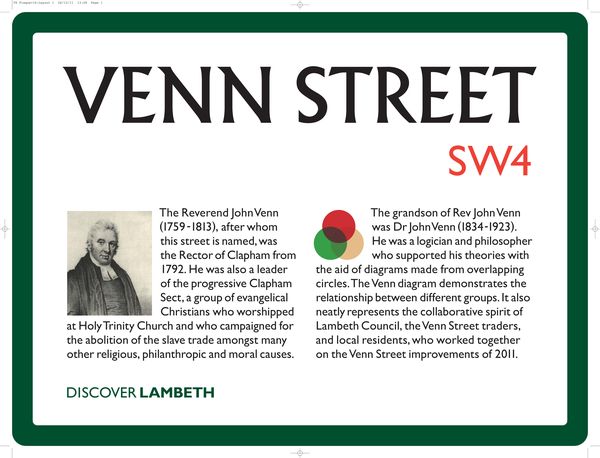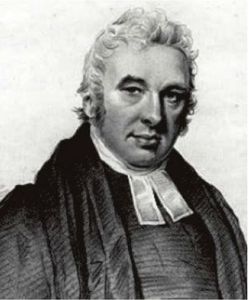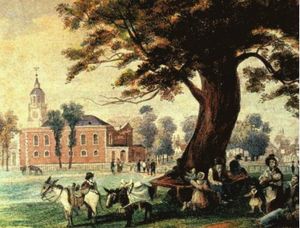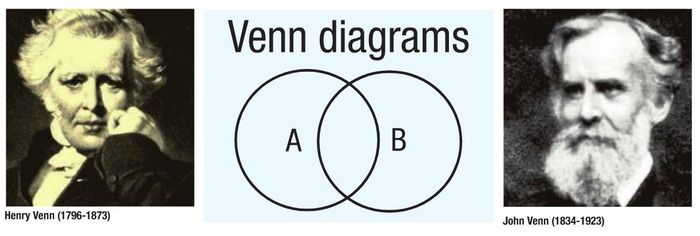The Clapham Society Local History Series — 32
The Venn family in Clapham
by Anne Wilson
This article first appeared in the South London Press on 3 November 2017
(Entitled: ‘Diagramming the History of the Venns’)

A plaque in Venn Street in Clapham on the wall of Barclays Bank explains the naming of the street and records just two members of a distinguished clerical and intellectual family.
The street was named after the Revd John Venn [1759 – 1813]. He was the son of the Revd Henry Venn [1725 – 1797], who was a curate here in 1754. In 1759 he was appointed vicar in Huddersfield, and John, his oldest son, was born in Clapham shortly before the family moved to Yorkshire. Henry Venn retired to the family home in Clapham in 1797 and was buried in the old churchyard in Rectory Grove.

His son John Venn was the Rector from 1792 until his death. It was during his ministry that the campaign for the Abolition of the Slave Trade developed. He was an active member of the so-called Clapham Sect. In 1799 he founded The Society for Bettering the Condition and Improving the Comfort of the Poor. The Society abolished skittle alleys and gambling in the local public houses. There is no record of how the poor reacted to the loss of this discomfort.
Venn was a reforming Anglican and eschewed non-conformist doctrine. When the puritan Hannah More travelled to Clapham, she did so in the Bishop of London’s coach. Nevertheless John Venn insisted that she got off at the Bull’s Head in Rectory Grove and walked the rest of the way to the Rectory (an old house later replaced by Rectory Gardens). He did not want any publicity regarding his meeting with her. The Bull’s Head, after some years of being named The Calf, was refurbished in 2018 and reopened as The Rectory. The Bishop of London’s coachman would have been very confused.
Henry Venn [1796 – 1873] was born in the Rectory in Clapham. He was the fifth of eight children. He became the Clerical Secretary to the Church Missionary Society in 1841. He was appointed full-time General Secretary in 1846 and served as such until his death.

He took other cultures seriously and treated them with great respect. He believed that the “European influence” in a native church was “the great shame and hindrance to its growth.” He wanted a greater degree of separation of the indigenous churches from the “church of soldiers settlers and missionaries”.
He was also way ahead of the times in that he believed that indigenous figures should lead in matters of African commerce and politics. On one hand he was criticised for moving too quickly for independence in Sierra Leone. On the other hand Nigerian historians to this day regard him as the ideological originator of Nigerian nationalism. In 1864 he supported the appointment of a former slave, Samuel Crowther to the Bishopric of West Africa.
The Venn Street plaque also commemorates Henry Venn’s son John [1834-1923]. From the 1860s, he was a leading member of a group of philosophers at Cambridge University, whose common-sense approach had a profound influence in their own day and beyond. He is best known for his use of diagrams which use overlapping circles to represent logical relationships. An example decorates our Venn Street Plaque.
This Supplement was added by The South London Press:
Venn Diagrams

The diagram invented by John Venn shows all possible relations between a collection of different sets.
In the diagram above suppose A is the set of creatures with two legs and B is the set of all creatures that can fly.
So each separate type of creature can be imagined as a point somewhere within either of the two circles A and B.
Living creatures that can both fly and have two legs, such as pigeons, fall in both sets, so would be placed in the area where the two circles overlap.
That region contains all such and only such living creatures.
Humans and penguins are bipedal, and so fall within the left hand circle, but since they cannot fly they do not appear in the area where A and B overlap.
Likewise mosquitos have six legs, and fly, so fall in the area of the right hand circle which does not overlap A.
Creatures that are not two-legged and cannot fly, such as sharks and centipedes, would be represented by points outside both circles.